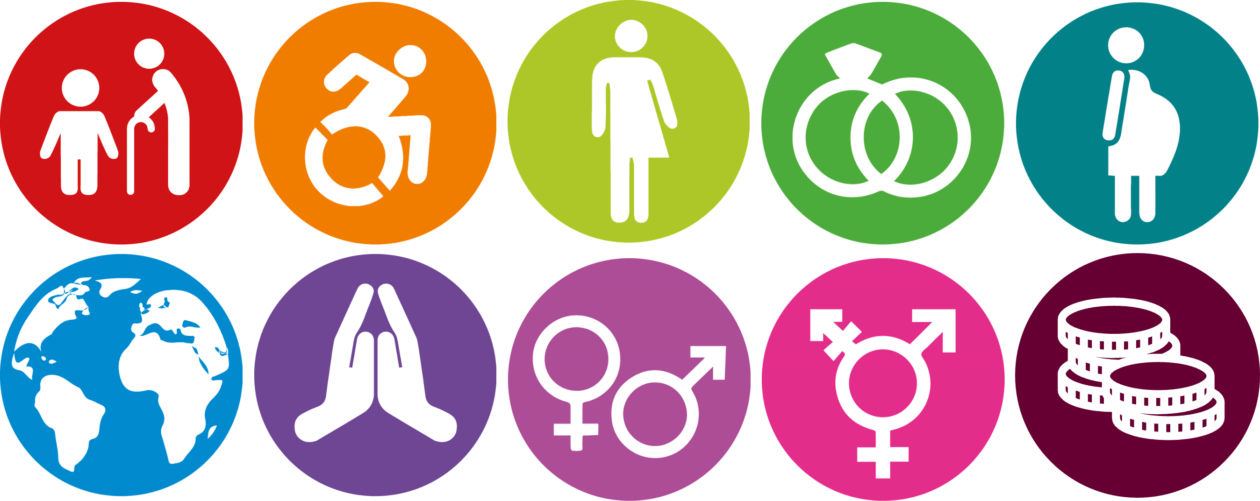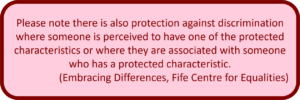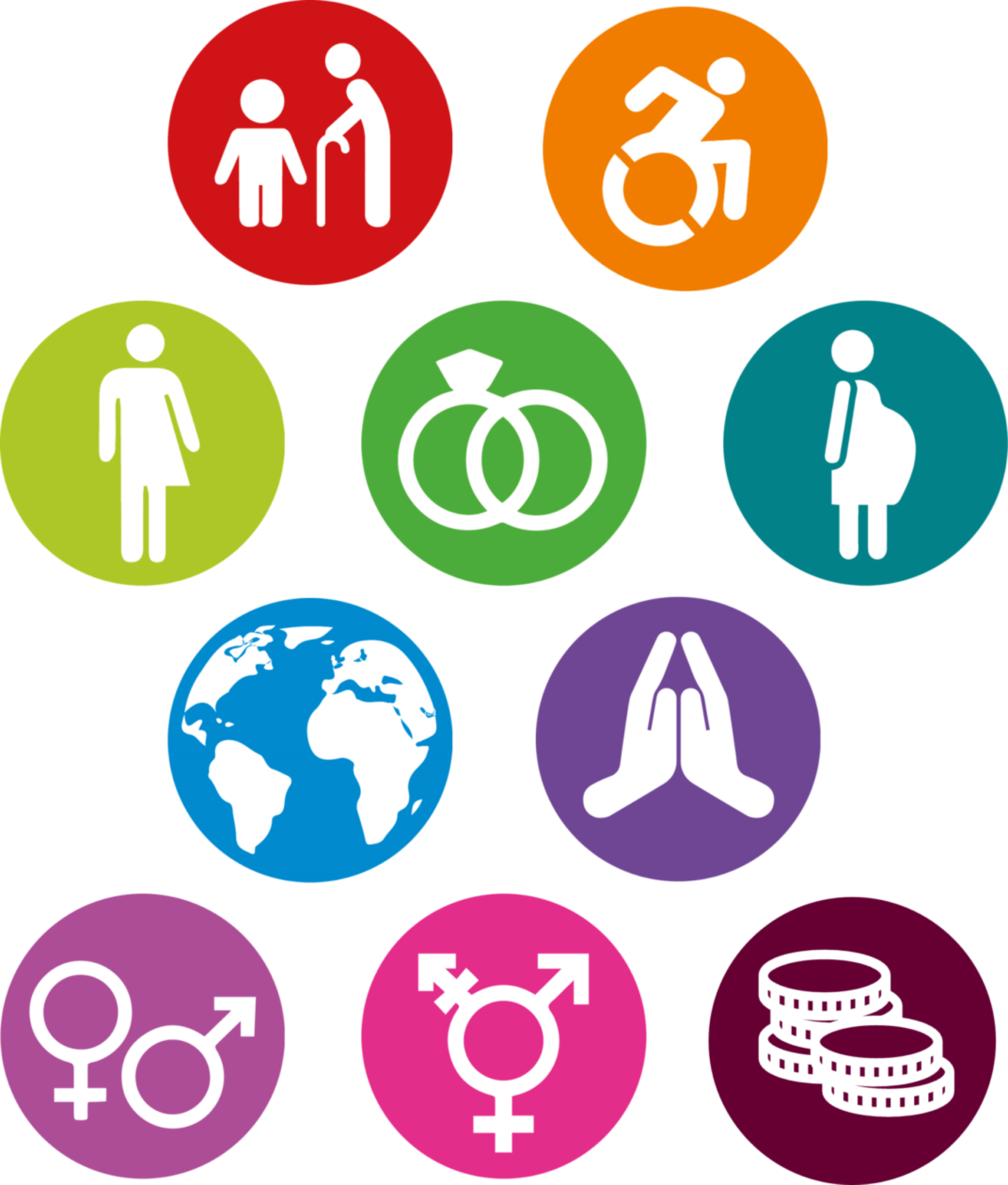The nine legally protected characteristics were established by the Equalities Act 2010. They are: Age; Disability; Gender Reassignment; Marriage and Civil Partnership; Pregnancy and Maternity; Race; Religion or Belief; Sex; and Sexual Orientation.
Hover over the images to find out more about each of the protected characteristics.

Age
A particular age group (for example, 18 year olds) or range of ages (for example 18 to 30 year olds).
Disability
A physical or mental impairment which has a substantial and long-term adverse effect on that person's ability to carry out normal day-today activities.
A note on neurodivergence: While some presentations of neurodivergence are a disability, others are not. However when reflecting on inclusivity, neurodivergence is a characteristic we should be ensuring is represented and considered.
Gender Reassignment
Proposing to reassign gender, is undergoing a process to reassign gender, or has completed this process.
Marriage and Civil Partnership
Legally married or in a civil partnership. Marriage can either be between a man and a woman, or between partners of the same sex. Civil partnership is currently between partners of the same sex (NB the law is to be changed to extend civil partnership to a woman and a man).
Pregnancy and Maternity
In a non-work situation, protection against maternity discrimination is for 26 weeks after giving birth, and this includes treating a woman unfavourably because she is breastfeeding.
Race
Race, colour, nationality (including citizenship) ethnic or national origins.
Religion or Belief
Religion, including a lack of religion. Belief refers to any religious or philosophical belief and includes a lack of belief.
Sex
Being a man or a woman.
Sexual Orientation
Heterosexual, gay, lesbian or bisexual, or perceived to have a particular sexual orientation, or connected to someone who has a particular sexual orientation.
Socio-economic Disadvantage
Areas to be considered include:
Adapted from: Equalities and Equity Toolkit, Connect.Scot for Scottish Government, 2021.
You will note we have added a tenth which, while not protected under law, is known be subject to discrimination and is linked with adverse life outcomes; Socio-economic Disadvantage.



